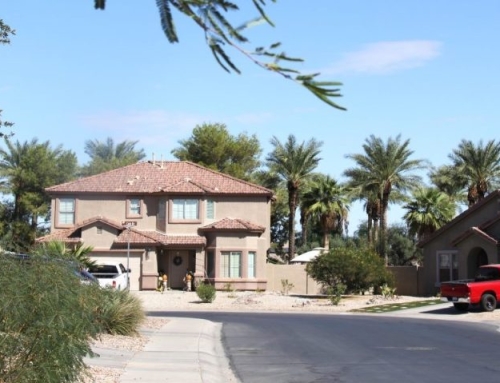Arizona Home Gardeners Can Help Protect Threatened Bees
Key pollinators in Arizona faced a rough summer, but community efforts can help them thrive.
Arizona is home to the second-most diverse bee population in the country, according to pollination ecologist and bee specialist Stephen Buchmann, who said more than 1,300 native bee species live in the state. The desert landscape also hosts a large population of honeybees, which — while not native to Arizona — are still important pollinators.
“Honeybees are sort of generalist pollinators, and they’re what we depend on for most of our agricultural pollination in this state,” Buchmann said, “but there are an awful lot of unsung heroines of pollination, and they’re the ground- and twig-nesting bees that we have.”
Most native bees are xerophiles, typically resilient to the hot temperatures and dry climate of the Sonoran Desert, but urban growth and real estate expansion threatens their habitats, Buchmann said. They tend to nest underground in abandoned burrows from other animals and dead or hollowed-out plants. Urban expansion limits their habitat options and puts more space between the bees and the water and food sources they need access to.

Arizona wildflowers are great resources for bees. (Photo by Hal DeKeyser).
Buchmann said that people can attract native bees to their gardens and help them thrive by planting native, desert-acclimated wildflowers.
“We have a big, big diversity of desert wildflowers,” he said. “Not all of them bloom every year, but bee larvae and pupae developing underground can wait years to match the rain and other signals that their wildflower and perennial food plants are getting perfect.”
At the 2023 Arizona Honeybee Festival in November, put on at Sun City Community College by the Arizona Backyard Beekeepers Association, beekeepers shared advice with community members on how to support Arizona’s bees.

“Save the Bees” is a common phrase used to encourage bee conservation, largely due to declining bee populations from habitat loss and pesticides. (Photo by Hunter Fore/Cronkite News)
According to Mike Hills, a master gardener who presented at the festival in Phoenix, most plants that benefit native bees will also benefit honeybees.
“They’ll feed on most anything that’s gotten nectar or pollen with it,” he said.
Flowers like desert bluebells, penstemon and sunflowers are native to Arizona and do well in the desert climate, providing bees with reliable sources of nectar. Planting them is a good low-maintenance way for home gardeners to support the local bees, as they tend to use less water.
Native bee species are usually equipped to deal with intense heat, but nonnative honeybees aren’t as equipped to survive in harsh conditions.

Prescott beekeepers show off their wooden beehive display. They relocate beehives and provide beekeeping education. (Photo by Hunter Fore/Cronkite News)
Honeybee hives are made of wax, so when it gets hot outside, bees have to constantly supply the hive with water to cool it down. According to Cricket Aldridge, ABBA’s director, the record-breaking heat Phoenix experienced over the summer exacerbated this issue. With water access limited, the bees couldn’t cool down their hives in response to the intense heat.
“The problem is when they go to get the water, the people kill the bees,” she said, noting pools and lakes are common sources of bees’ water. “They never make it back to their hive with the water, and their colony dies.”
Aldridge said to help the bees access water, Arizona homeowners should create water stations outside their homes so bees can have reliable access to the water they need to cool down their homes.
“You can get a bowl of water with marbles so they don’t drown in a birdbath,” she said. “Anything away from your pool.”
Aldridge hopes that events like the honeybee festival can educate community members about ways to help protect Arizona’s bees and their role in the ecosystem instead of being afraid of them.
“We are part of the ecosystem,” she said, “We just have to own up to it.”
This article was produced by Cronkite News Service
Kate Duffy
Hunter Fore
The post Arizona Home Gardeners Can Help Protect Threatened Bees appeared first on Arizona Realty Network.
Related Posts

Contact Form










